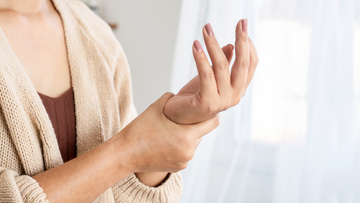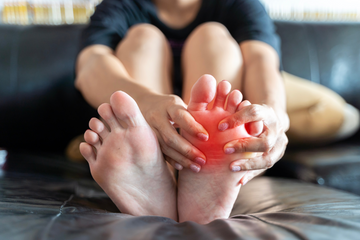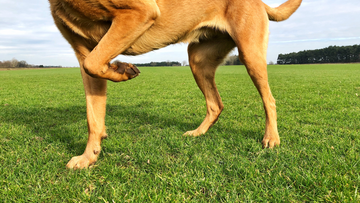Your lymphatic system is crucial to keeping your body healthy. Lymphedema is the
name of a type of swelling. It happens when lymph builds up in your body's soft tissues. Lymph
is a fluid that contains white blood cells that defend against germs. It can build up when
the lymph system is damaged or blocked. It usually happens in the arms or legs.
The blockage prevents lymph fluid from draining well, and the fluid buildup leads to swelling.
The swelling caused by lymphedema ranges from mild, hardly noticeable changes in the
size of your arm or leg to extreme changes that make the limb hard to use.

Symptoms:
• Swelling in your arm or leg, including fingers or toes
• Redness of the skin
• A feeling of heaviness or tightness
• Limited range of motion
• Aching or discomfort
• Recurring infections
• Hardening and thickening of the skin (fibrosis)
Causes of lymphedema include:
• Infection
• Cancer
• Scar tissue from radiation therapy or surgical removal of lymph nodes
• Inherited conditions in which lymph nodes or vessels are absent or abnormal
TWO MAJOR TYPES OF LYMPHEDEMA
▪ Primary lymphedema (PLE) is an inherited type of lymphedema that is caused by a defect
during the formation of the lymphatic system before birth.
▪ Secondary lymphedema (SLE) is a type of lymphedema caused by damage to the lymphatic
system after birth. The most frequent causes are cancer, cancer surgery, treatment, and
radiation. Other causes of SLE include injuries, surgery, burns, and injuries. Breast cancer is
the most common.
There is no cure for Lymphedema. Treatment focuses on reducing the swelling and
controlling the pain. Compression treatments can help reduce swelling and prevent scarring
and other complications.
Examples of compression treatments are:
• Elastic sleeves or stockings: These must fit properly and provide gradual compression
from the end of the extremity toward the trunk.
• Bandages: Bandages that are wrapped more tightly around the end of the extremity and
wrapped more loosely toward the trunk, to encourage lymph flow out of the extremity
toward the center of the body.
• Pneumatic compression devices: These are sleeves or stockings connected to a pump
that provides sequential compression from the end of the extremity toward the body.
These may be used in the clinic or in the home and are useful in preventing long-term
scarring, but they cannot be used in all individuals, such as those with congestive heart
failure, deep venous thrombosis, or certain infections.
• Manual compression: Massage techniques, known as manual lymph drainage, can be
useful for some people with lymphedema.
• Exercises: Exercises that lightly contract and stimulate arm or leg muscles may be
prescribed by the doctor or physical therapist to help stimulate lymph flow.
Natural ways to manage symptoms include massage, exercise, healthy skincare, not
blocking lymph flow (no crossing those legs!), deep breathing, overcoming obesity and
following a healing foods diet with plenty of anti-inflammatory choices.
Benefab® offers a
Therapeutic Blanket which may offer some assistance with increasing
mobility, lessening pain, and relaxing muscles. The Benefab ® fabric is infused with a powder
blend comprised of 30 lead-free minerals that emit therapeutic waves known as FAR-infrared
rays which penetrate deep to provide soothing relief for pain and healing
























